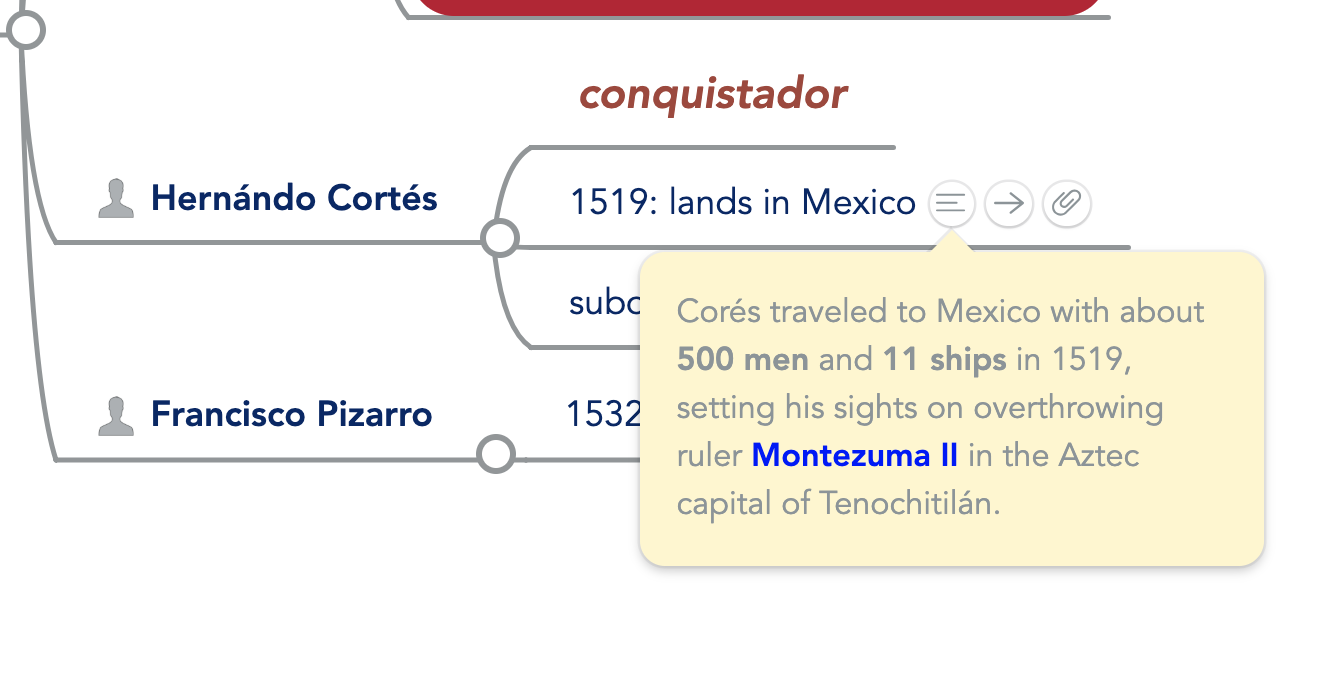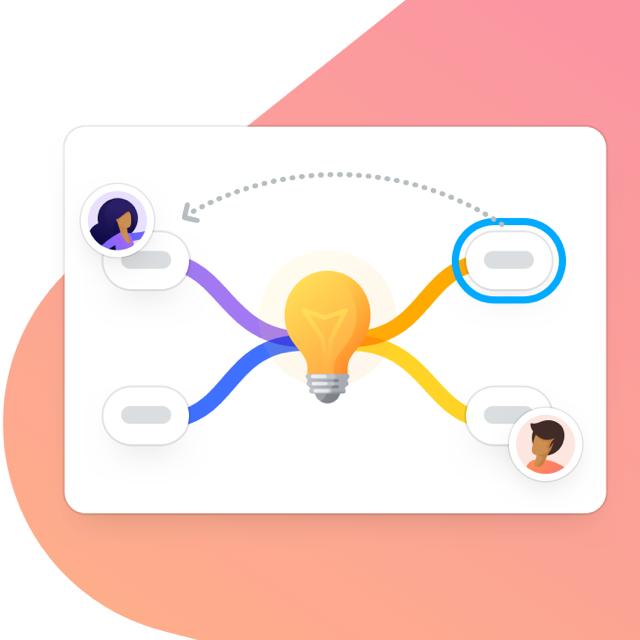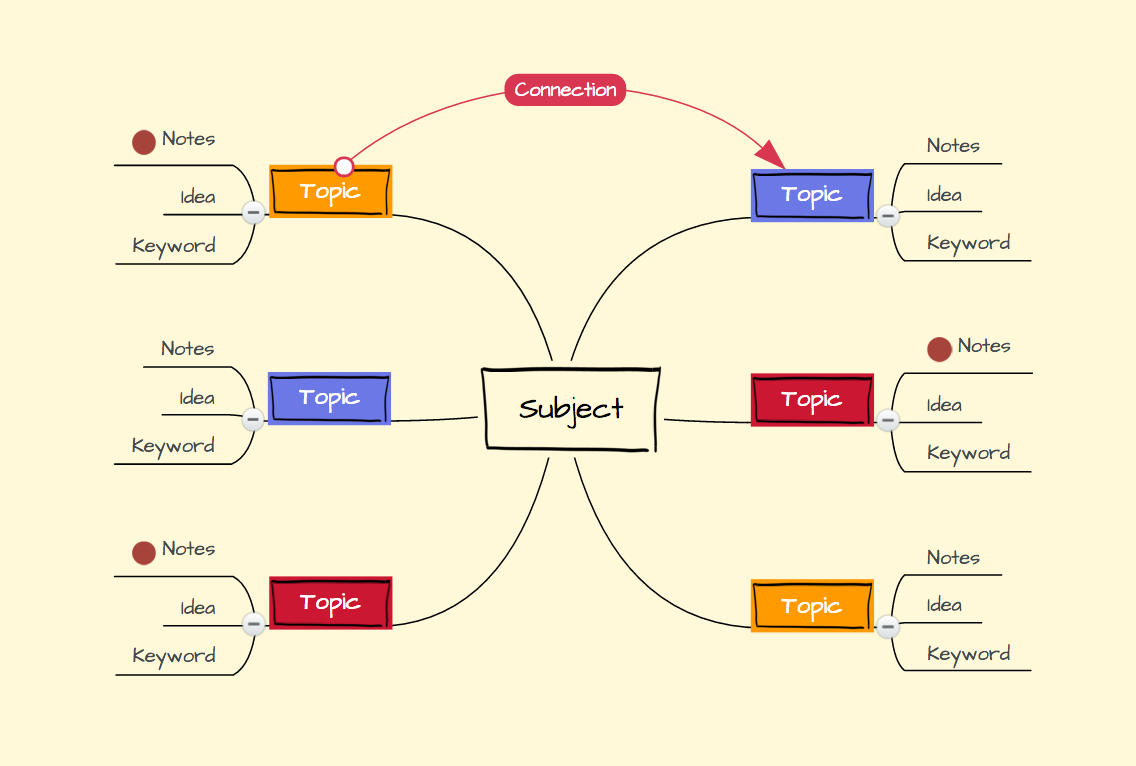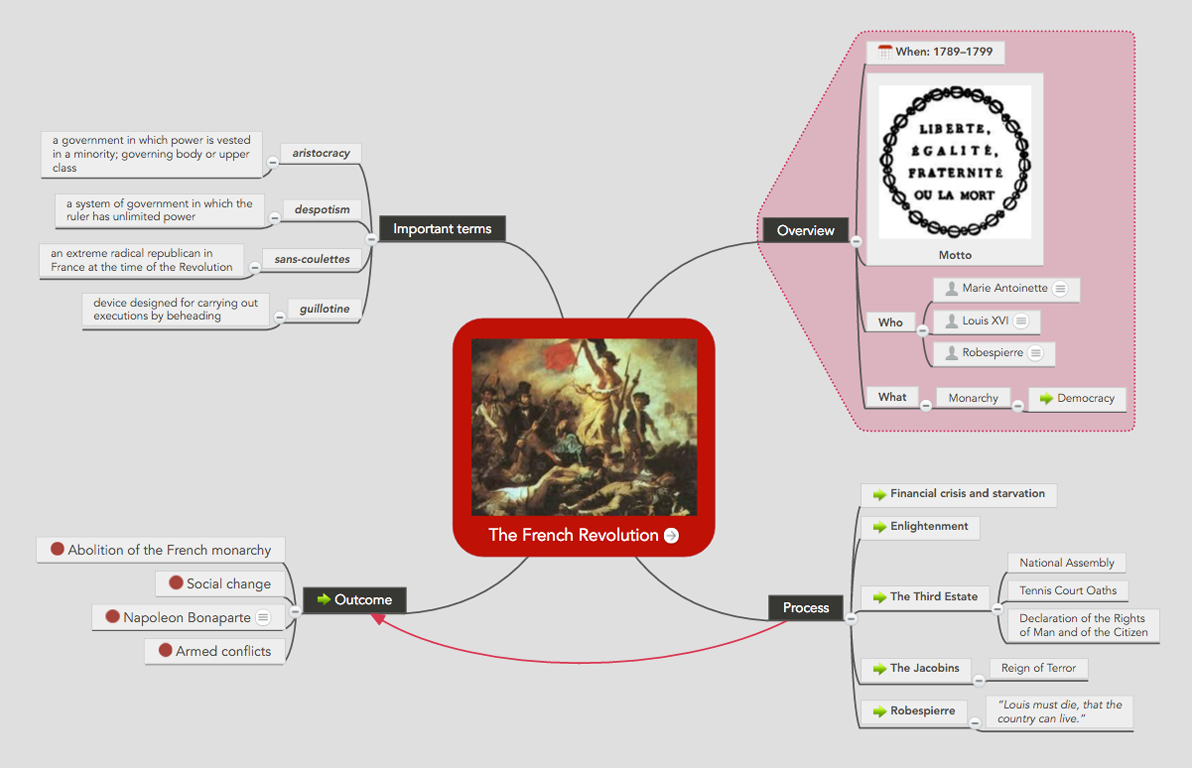In this article we’ll introduce you to an effective note taking system that will enable you to take fewer, more meaningful notes; recite, review and reflect upon your notes regularly; and memorize the information stored in them longterm.

Before we get started, let’s take a closer look at traditional note taking techniques that are used by most students.
Looking for even more ways to use mind maps? Get inspired with these 13 mind map examples.
Traditional Note Taking
Most students use lined notebooks and thus take linear notes. These linear notes start in the upper left corner of the page and then go from left to right, from top to bottom, until the page is full. The same goes for students working on laptops — instead of paper notebooks they simply use text processing software such as Microsoft Word or Google Docs.
Why Linear Notes Are Problematic
Just because a huge number of students use this method doesn’t mean that it’s actually effective. In fact, research has shown that study methods most favored by students are usually the least effective. But what’s wrong with good old linear notes? Below you’ll find just a few of the reasons why linear notes are not ideal for studying:
- Linear notes can be extremely monotonous, which makes them harder to memorize.
- Traditional note taking often feels laborious for students because it bores them mentally while it exhausts them physically. (Just try writing for two hours straight and then see how your writing hand feels!)
- Lined paper encourages students to write whole sentences, which is unnecessarily time-consuming and results in pages upon pages of information of which only a small percentage is actually important.
- Linear notes don’t provide a good overview of a topic. Students often have to waste valuable time re-reading large chunks of their notes to find the information they’re looking for.
- Once a page has been filled, it’s hard to add additional information to it. Students are forced to squeeze it in between the lines or add it at the bottom of the page with an asterisk.
What about taking notes in Word documents?
- Research has shown that “whereas taking more notes can be beneficial, laptop note takers’ tendency to transcribe lectures verbatim rather than processing information and reframing it in their own words is detrimental to learning.”
Effective Note Taking Using the Mind Map Format
The mind map format is a great alternative to linear note taking and can be used during lectures or presentations, in class, and even while you’re reading a text or are watching a video.
The basic principle of mind mapping is very simple: Instead of lined paper, you start on a blank paper or digital canvas. The subject (e.g. the topic of the lecture) goes in the center of the canvas, where it’s always clearly visible.
Instead of writing whole sentences, you note down individual keywords or short phrases, which are connected to the center with lines.
Benefits of taking notes in a mind map
Here are just a few reasons why effective note taking is so much easier when you’re using the mind map format:
- A mind map shows relationships, hierarchies and connections between individual pieces of information at a glance.
- Mind maps provide a great overview of a topic because they store all your notes related to that topic on one single page.
- You can easily attach additional notes, links and whole files to your map and thus add a whole lot of information to it without diminishing the great overview it provides.
- Mind maps encourage you to take fewer yet more meaningful notes. While you create the map your brain actively processes the information instead of just mindlessly transcribing it.
- Mind maps use a number of mental triggers such as images, icons, colors and a two-dimensional structure that help you memorize their contents more easily.
- You can always go back and add more information to a topic. This is particularly great if your teacher doesn’t present information in a completely linear way and instead tends to jump around a little when trying to explain something.
- Taking notes in a mind map is fun and feels more like doodling than actual work!
Discover mind mapping
Get Started!As an example, check out this article about the famous scientist Albert Einstein. On the left you see the article in a traditional, linear text document. On the right is an image of the same information stored in a mind map. Which one would you say offers a better overview and would be easier to revise and remember?
How to Get Started with Mind Mapping
A mind map is a diagram that visualizes your notes on a two-dimensional canvas. The subject of the map is always placed in the center of the map, and all related notes are written in a radiant structure around the center and connected to it with lines. The elements closest to the center are similar to headlines — they are the most prominent, most important pieces of information. From there, more detailed notes and keywords can branch off.
This system creates a clear, hierarchical structure. It ensures that the most important information is always located in the center and thus visible at a glance.
If you’re looking for a simple and fun mind mapping course that will teach you the basics in no time, check out the free MindMeister Academy!
A few more tips to set you up for success
1) The way to order the branches of your map is by starting at about 1 o’clock and going clockwise around the center. This is also how mind maps are generally read.
2) You can open and close branches of the map by clicking the little + button at their end. This is a great way to test yourself after you’ve memorized the map a bit.
3) Be sure to use plenty of colors, icons and images to make your map more unique and memorable! You can also develop your own system of color codes and icons, which you can then re-use for all your maps.
4) You can link from one mind map to another. This way you can create an index map for a subject with an overview of the entire year’s curriculum, and from there link to a number of sub maps that store your notes for individual lectures.
Learn more about the fundamentals of mind mapping here.
Effective Note Taking Examples
Mind maps always follow the same principle, but that doesn’t mean they all look the same. In fact, mind mapping is a very personal thing, and when multiple people mind map the same information, no map will look exactly like the next. Of course, the look of your map also largely depends on the information it visualizes. Below you’ll find a few memorable mind map examples for your inspiration.
The French Revolution
Notes from a high school history class
Questions in Latin
Notes from a high school Latin class
An Introduction to Speech Act Theory
Notes from a college course about English Linguistics
The Call of the Wild
Notes taken while reading a book. (Creating such a mind map is also a great way to improve your reading comprehension!)
If you want to give this effective note taking system a try, check out MindMeister’s educational plans, or get started with a free account!
Take Better Notes with Mind Maps
Get Started!















